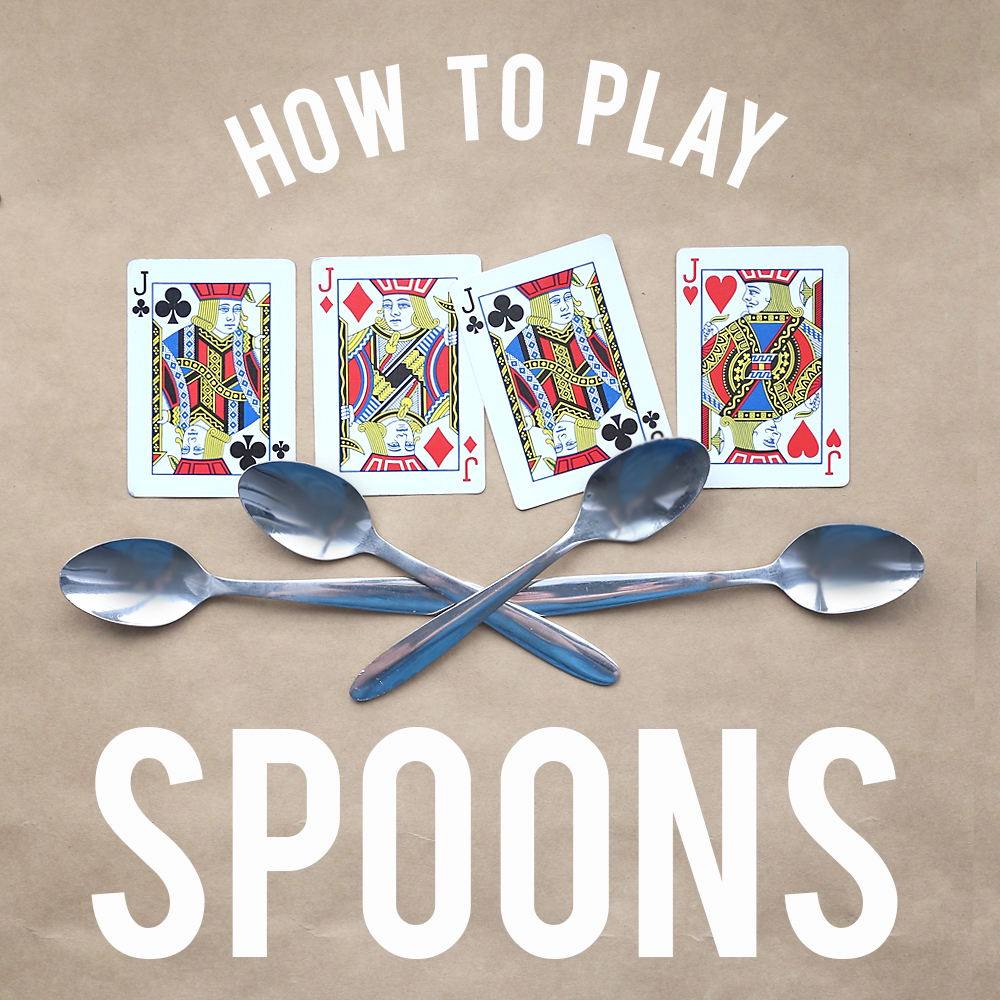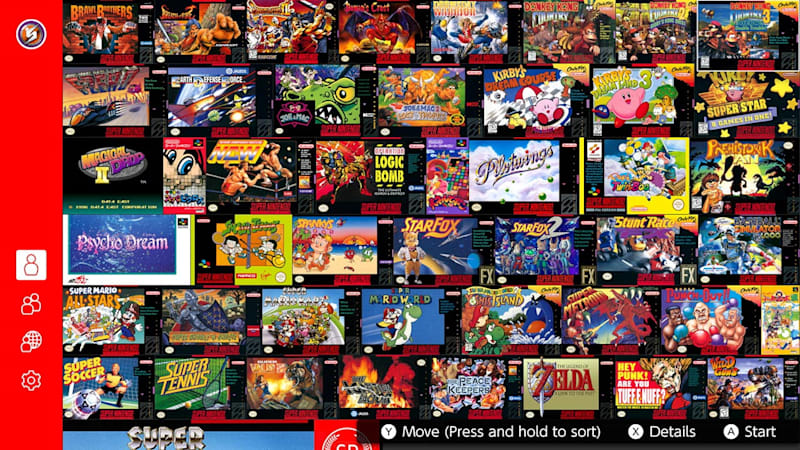Topic SEGA Game Gear: Dive into the captivating world of SEGA Game Gear, the innovative handheld that revolutionized gaming with its color display and rich game library, marking a significant chapter in the history of video games.
Table of Content
- Overview and History of SEGA Game Gear
- Game Gear"s Competitive Marketing Strategies
- Game Library and Iconic Titles for Game Gear
- YOUTUBE: Classic Game Room Sega Game Gear Review
- Technical Specifications and Accessories
- Game Gear"s Reception and Legacy
- Comparative Analysis with Rival Systems
- Decline and Discontinuation
- The Emergence of Game Gear Micro
- Collectibility and Nostalgia Factor
- Game Gear in Modern Gaming Culture
Overview and History of SEGA Game Gear
The SEGA Game Gear, a significant innovation in handheld gaming, was launched in response to the growing popularity of Nintendo"s Game Boy. Initiated under the codename "Project Mercury", development began in 1989, leading to its release in Japan on October 6, 1990, and subsequent launches in North America, Europe, Brazil in 1991, and Australia in 1992.
As a handheld version of the Master System, the Game Gear boasted a 4,096 color palette, which was significantly superior to the Master System"s 64 colors. This feature, coupled with its ability to produce stereo sound through headphones, set it apart from its competitors. Its design allowed for easy porting of Master System games and the use of a Master Gear Converter for playing original Master System games on the Game Gear.
The system"s initial release saw remarkable success, selling 40,000 units in Japan within the first two days, and receiving over 600,000 back orders. In North America and Europe, the Game Gear was marketed as a "cooler" alternative to the Game Boy, using aggressive advertising strategies. However, its success was somewhat mitigated by battery life issues, as the Game Gear required six AA batteries for about five hours of gameplay, in contrast to the Game Boy"s longer battery life with fewer batteries.
Despite its technological superiority, the Game Gear faced challenges in the handheld market. Sales declined as SEGA shifted focus to home consoles like the Genesis, leading to a gradual reduction in support for the Game Gear. The system was officially discontinued in 1997, though it left a lasting impact on the gaming industry and is remembered fondly by gamers for its color display and rich library of games.
Interestingly, even after its discontinuation, the Game Gear experienced a revival through third-party developments and nostalgia-driven initiatives like the Game Gear Micro. It remains an iconic part of gaming history, known for bringing color and innovation to handheld gaming.

READ MORE:
Game Gear"s Competitive Marketing Strategies
SEGA"s approach to marketing the Game Gear was both aggressive and innovative, particularly in its competition with Nintendo"s Game Boy. Recognizing the necessity of distinctive marketing in the handheld console market, SEGA leveraged the Game Gear"s technical advancements, such as its superior color palette, as a key selling point. The Game Gear boasted a 4,096 color display compared to the Master System"s 64 colors, a feature heavily emphasized in marketing campaigns.
In Japan, SEGA"s marketing strategies were characterized by featuring Japanese women in advertisements, highlighting the Game Gear"s appeal across demographics. However, in North America and Europe, SEGA adopted a more confrontational approach. Advertisements frequently included direct comparisons with the Game Boy, often depicting Game Boy users in a negative light. This bold strategy was embodied in the "Sega Scream" campaign, where advertisements would end with someone yelling "SEGA!" in a dramatic fashion.
The marketing in the United Kingdom included the slogan "To be this good takes SEGA", along with unique advertisements like featuring a biker. This approach helped the Game Gear achieve a significant market share in the UK, rising from 16% to 40% in just one year.
Despite these efforts, SEGA"s aggressive marketing couldn"t fully bridge the gap with Nintendo. The Game Gear did not achieve the sales numbers of its main rival, the Game Boy, which had a simpler design and longer battery life. SEGA eventually shifted its focus to home consoles, leading to a gradual decline in support for the Game Gear.
Nonetheless, SEGA"s marketing strategies for the Game Gear are remembered for their creativity and boldness, setting a precedent in the gaming industry for competitive advertising.
Game Library and Iconic Titles for Game Gear
The SEGA Game Gear boasted an impressive library of games, spanning various genres and appealing to a wide range of gamers. Its array of titles included everything from classic platformers and RPGs to sports games, each bringing unique gameplay experiences to the portable console.
One of the most iconic titles for the Game Gear was "Sonic the Hedgehog". This game brought the famous SEGA mascot to the handheld world, featuring smooth controls and vibrant visuals, making it an instant hit. "Sonic Chaos", as a follow-up to "Sonic the Hedgehog 2", offered a portable Sonic adventure with new features like hover shoes and the "Super Peel Out" move.
Another notable title was "Streets of Rage", a side-scrolling brawler that became immensely popular for its intense action and engaging gameplay. This game allowed players to take the fight against crime to the streets, anywhere and anytime.
The Game Gear also shined with its RPG offerings, one of the most prominent being "Phantasy Star". This game stood out for its deep storyline and captivating art style. It became a staple RPG experience for many Game Gear enthusiasts.
"Vampire: Master of Darkness" offered a thrilling adventure with its horror-themed gameplay, providing an alternative to the Castlevania series for SEGA fans. Its challenging levels and diverse weapon choices made it a memorable title on the Game Gear.
For sports game enthusiasts, titles like "NFL Football" were significant. They captured the essence of professional sports with great graphics and sound, adding a competitive edge to the handheld gaming experience.
In addition to these, the Game Gear library included other memorable games like "Prince of Persia", "Mega Turrican", and "Castle of Illusion Starring Mickey Mouse", each contributing to the diverse and rich gaming experience the console offered.

Classic Game Room Sega Game Gear Review
\"Looking for a comprehensive review on the latest gadgets? Look no further! Our video provides you with an in-depth analysis, expert opinions, and exclusive insights to help you make informed buying decisions. Don\'t miss out on this review that will unlock the hidden potential of your favorite devices!\"
Technical Specifications and Accessories
The SEGA Game Gear, a remarkable achievement in the realm of handheld gaming, was launched in 1990 as a rival to Nintendo"s Game Boy. It featured advanced technology for its time, which we will explore in detail.
Technical Specifications
- Processor: Powered by a Zilog Z80 CPU, clocked at 3.58 MHz.
- Memory: Equipped with 8K RAM and 32K ROM.
- Display: A 3.2-inch LCD screen, capable of displaying up to 32 colors simultaneously from a palette of 4,096 colors, with a resolution of 160x144 pixels.
- Power: Operated using six AA batteries or an AC adapter.
- Design: Featured a unique sloped front and an angled shape, with a vibrant color palette.
- Weight: Approximately 1.2 pounds, making it a portable and convenient option.
Accessories
SEGA Game Gear also boasted a variety of intriguing and useful accessories that enhanced the gaming experience.
- TV Tuner: This allowed the Game Gear to receive broadcast TV signals, turning it into a small TV.
- Rechargeable Battery Packs: Two versions were available, including a belt-clip version for portability.
- Gear to Gear Link Cable: Enabled two-player gaming by connecting two Game Gear units.
- Super Wide Gear: A screen magnifier that improved visibility and reduced external light interference.
- Carrying Case: Provided secure and compact storage for the Game Gear and its accessories.
- Master Gear Converter: Allowed playing Sega Master System games on the Game Gear.
- AC and Car Adapters: Essential for powering the Game Gear given its high battery usage.
- Cheat Devices: Such as the Game Genie, were available for the Game Gear.
The Game Gear, with its advanced specifications and a wide range of accessories, not only provided a rich gaming experience but also became a significant part of the gaming history of the early "90s.
The Ultimate £250 Sega Game Gear
\"Discover the ultimate solution to all your fitness goals! Our video showcases the most effective workout routines, diet tips, and expert advice to help you achieve your desired results. Unleash your full potential and unlock the ultimate version of yourself with this transformative video that will change your life!\"
Game Gear"s Reception and Legacy
The SEGA Game Gear, launched in 1990, stood as a pioneering force in the handheld gaming market. Despite facing stiff competition from the dominant Nintendo Game Boy, the Game Gear carved its own niche with its impressive technological capabilities and a diverse library of games.
Initial Reception and Market Impact
The Game Gear was positively received for its innovative color display and processing power, distinguishing itself from the monochromatic Game Boy. Sega"s strategic marketing positioned the Game Gear as a cooler and more sophisticated alternative. Despite its technological superiority, the Game Gear faced challenges due to its bulky size, high battery consumption, and a less extensive game library compared to the Game Boy.
Legacy and Influence
- Innovation in Handheld Gaming: The Game Gear"s color display was a significant advancement in handheld gaming technology, influencing future developments in the industry.
- Collection and Nostalgia: Over the years, the Game Gear has become a collector"s item, with its unique game titles and limited edition colored units being particularly sought after.
- Emulation and Continued Interest: The Game Gear"s games and system have been emulated on various platforms, indicating a lasting interest in its gaming experience.
Comparative Market Performance
Despite its innovative features, the Game Gear could not surpass the Game Boy in market share. Factors such as shorter battery life and a smaller game library contributed to its lesser market performance, though it managed to sell millions of units worldwide.
Enduring Popularity
The Game Gear holds an enduring appeal among retro gaming enthusiasts, remembered for its role in advancing handheld gaming and for its distinct library of games, including titles like "Sonic the Hedgehog", "Shinobi", and "Streets of Rage".
In summary, the SEGA Game Gear"s reception was a mix of admiration for its technological prowess and challenges in market competition. Its legacy continues in the form of emulation, collectibility, and a fond remembrance in the history of video gaming.

Comparative Analysis with Rival Systems
The Sega Game Gear, launched in 1990/1991, entered the handheld gaming market as a formidable rival to Nintendo’s Game Boy, Atari Lynx, and TurboExpress. Its design, heavily influenced by the Master System, boasted a significant technological edge over the Game Boy, featuring a full-color, backlit screen and a vast 4,096 color palette. This technical prowess positioned the Game Gear not just as a gaming device, but as a symbol of advanced gaming technology of its time.
Game Gear vs Game Boy
- Battery Life: A major downside of the Game Gear was its battery life. While the Game Boy could run over 30 hours on 4 AA batteries, the Game Gear lasted only around 3-4 hours on 6 AA batteries.
- Game Library: The Game Gear’s game library was extensive, with many titles being close ports of Master System games. However, Nintendo"s tight contracts with developers limited the availability of games for rival systems, including the Game Gear.
- Market Performance: Despite its technical superiority, the Game Gear couldn’t surpass the Game Boy in market dominance. Nintendo’s handheld outsold the Game Gear, with a longer battery life and a more extensive game library being key factors.
Game Gear vs Atari Lynx
| Feature | Game Gear | Atari Lynx |
| Design | Standard handheld orientation | Designed for multiple holding styles |
| Battery Life | Shorter battery life | Slightly better battery performance |
| Extra Features | Peripherals like the Master Gear; TV tuner | Limited to basic gaming features |
| Platformers | Rich library with titles like Sonic the Hedgehog | Lacked big-name platformers |
| Puzzle Games | Diverse range including Columns, Puyo Puyo | Few notable puzzle games |
While the Game Gear outperformed the Atari Lynx and NEC TurboExpress in the color handheld console segment, its late entry into the market, shorter battery life, and the stronghold of Nintendo’s Game Boy in the market hampered its long-term success. Despite these challenges, the Game Gear remains a significant part of gaming history, representing Sega"s ambitious attempt to rival Nintendo in the handheld gaming space.
Decline and Discontinuation
The Sega Game Gear, despite its advanced technology and competitive features, faced a gradual decline leading to its discontinuation. This downturn was influenced by several key factors, some of which extended beyond the console"s inherent characteristics.
Factors Leading to Decline
- Technical Drawbacks: Despite its technological superiority in terms of display and color palette, the Game Gear suffered from significant drawbacks. Its bulky design, heavy weight, and notably short battery life were major concerns. The Game Gear"s large size made it less portable compared to the more compact Game Boy, and its heavy battery consumption limited its practicality for sustained play.
- Game Library: The availability of games was another challenge. While the Game Gear did have a range of titles, it was unable to match the expansive and popular game library of the Game Boy. This limitation was partly due to Nintendo"s strict contracts with developers, restricting them from creating games for rival systems.
Corporate Challenges
Sega"s broader corporate issues also played a significant role in the decline of the Game Gear. As Sega faced economic difficulties and management challenges, it led to a strategic shift in focus away from the Game Gear. This shift included an emphasis on home consoles like the Sega Genesis, along with new ventures such as the Sega CD and Sega Saturn. As a result, the Game Gear did not receive the sustained support and development it needed to thrive in the competitive market.
Discontinuation and Legacy
The Game Gear was officially discontinued in 1997, although its sales had been waning prior to this date. Despite the discontinuation, the Game Gear left a lasting legacy in the gaming world, remembered for its bold attempt to challenge the dominance of Nintendo"s Game Boy and its role in the evolution of portable gaming systems. Interestingly, its influence persisted in various forms, including a budget re-release by Majesco Entertainment in 2000 and its inclusion in later platforms like Nintendo"s 3DS Virtual Console service.

The Emergence of Game Gear Micro
The Game Gear Micro, unveiled as part of Sega"s 60th anniversary celebration, is a miniature version of the classic Game Gear. Designed with nostalgia in mind, it features a significantly smaller size and offers a unique approach to retro gaming.
Design and Features
- Size: Each Game Gear Micro measures 80mm x 43mm x 20mm, making it a remarkably miniaturized version of the original.
- Display: The device is equipped with a tiny 1.15-inch screen, a fraction of the original Game Gear"s display size.
- Power: Powered by two AAA batteries, it also supports charging via a micro-USB connection.
- Sound: The system features one mono speaker and a headphone jack.
Variants and Game Selection
Sega released the Game Gear Micro in four different colors, with each color variant containing a distinct set of pre-loaded games:
- Black Model: Includes Sonic the Hedgehog, Out Run, Puyo Puyo 2, and Royal Stone.
- Blue Model: Comes with Sonic Chaos, Gunstar Heroes, Sylvan Tale, and Baku Baku Animal.
- Red Model: Features Columns, Revelations: The Demon Slayer, The GG Shinobi, and Megami Tensei Gaiden: Last Bible Special.
- Yellow Model: Contains Shining Force titles and Nazopuyo Aruru no Ru.
Special Features
The Game Gear Micro also offers an accessory called the Big Window Micro, a lens that magnifies the small screen for better visibility. This accessory is reminiscent of the original Game Gear"s Big Window and is included when purchasing the full set of four Game Gear Micro units.
Availability and Reception
Initially released exclusively in Japan, the Game Gear Micro has drawn interest for its collectible nature and nostalgic appeal. Its small size, unique color variations, and pre-loaded game sets cater to both retro gaming enthusiasts and collectors.
Collectibility and Nostalgia Factor
The Sega Game Gear, with its rich history and diverse library, has become a coveted item for collectors and retro gaming enthusiasts. Its appeal is rooted in nostalgia, technological innovation, and the variety of rare models that have emerged over the years.
Collectible Variants and Accessories
- The Game Gear was known for its interchangeable cartridges and the Master Gear Converter, allowing Master System games to be played on the portable device.
- Various accessories, such as rechargeable battery packs, the Gear to Gear link cable for multiplayer games, and the Super Wide Gear magnifier, add to its collectible value.
- Rare editions like the Gold & Diamond Encrusted Game Gear, Coca-Cola Sega Game Gear, and Samsung Game Gear are highly sought after by collectors, with some variants fetching high prices on auction sites.
- The Ninku Sega Game Gear, a limited edition console released in Japan, is another collector"s favorite, notable for its unique light blue shell and custom game cartridge.
Nostalgia and Renaissance
The Game Gear evokes nostalgia, reminiscent of the early "90s handheld gaming era. Its legacy is kept alive by a passionate community of modders and collectors. With modern modifications like screen, board, speaker, and battery upgrades, the Game Gear transforms into a retro handheld suitable for the 21st century.
Today, the Sega Game Gear is more than just a gaming console; it"s a symbol of the evolution of handheld gaming and a cherished piece of gaming history for enthusiasts around the world.

READ MORE:
Game Gear in Modern Gaming Culture
The Sega Game Gear, released in 1990, has left an indelible mark on the landscape of modern gaming culture. Its legacy is seen in various aspects of contemporary gaming, from game design to the preservation and celebration of retro games.
Impact on Game Development and Design
The Game Gear"s innovative features, such as its color LCD screen and rechargeable battery, significantly influenced the development and design of future gaming systems. It introduced gamers to a new level of portable gaming experience, paving the way for more vibrant graphics and complex game worlds. The Game Gear"s 8-bit processor allowed for advanced features like scrolling backgrounds, large sprites, and basic 3D graphics, setting new expectations for handheld game design.
Revival and Nostalgia
In recent years, there has been a resurgence of interest in the Game Gear, driven by nostalgia and an appreciation for retro gaming. The console"s unique game library, including titles like "Sonic the Hedgehog 2" and "Castle of Illusion Starring Mickey Mouse", remains popular among retro gaming enthusiasts. Emulation technology has played a crucial role in preserving the Game Gear"s legacy, making its classic games accessible to new generations of gamers.
Collectibility
The Game Gear has become a collectible item, with rare and unique models sought after by gaming collectors. Its place in gaming history, combined with a diverse range of titles and technological innovations, makes it a valued piece for those interested in the evolution of handheld gaming.
Cultural Influence
The Game Gear"s influence extends beyond its hardware, impacting game design and the broader gaming culture. It demonstrated Sega"s willingness to experiment and push the boundaries of portable gaming, influencing future handheld consoles and the overall gaming industry.
Explore the vibrant legacy of the SEGA Game Gear, a pioneering force in handheld gaming that continues to captivate with its rich history, collectible allure, and enduring impact on modern gaming culture. A journey into nostalgia and innovation awaits.











/cdn.vox-cdn.com/uploads/chorus_image/image/71354547/TFS___Vikings_vs_Packers___20220911.0.jpeg)



